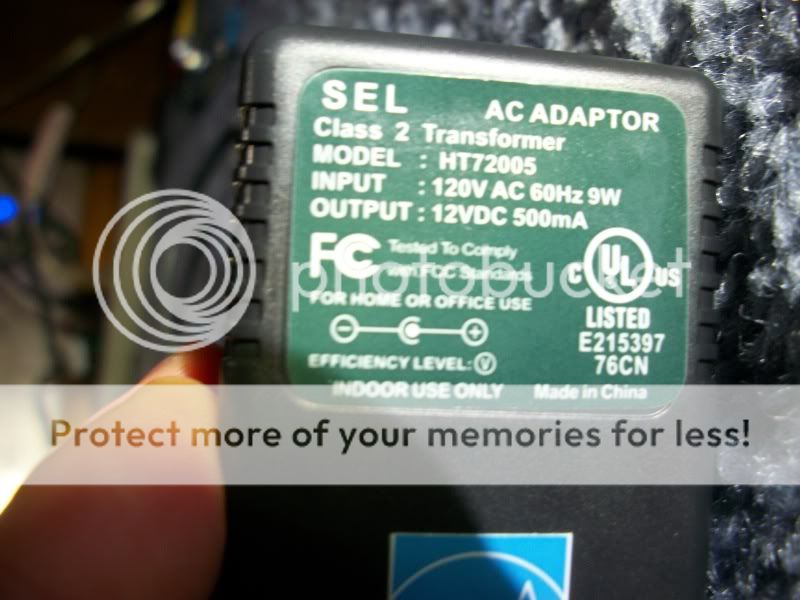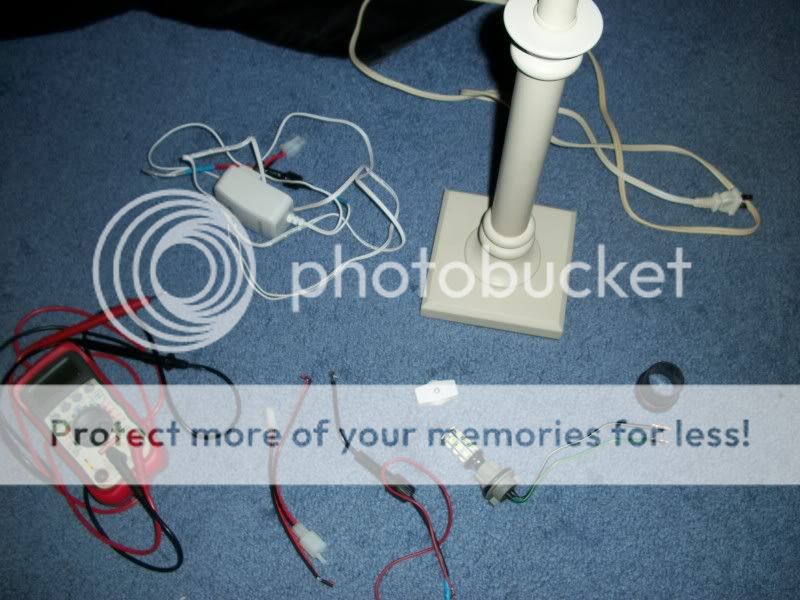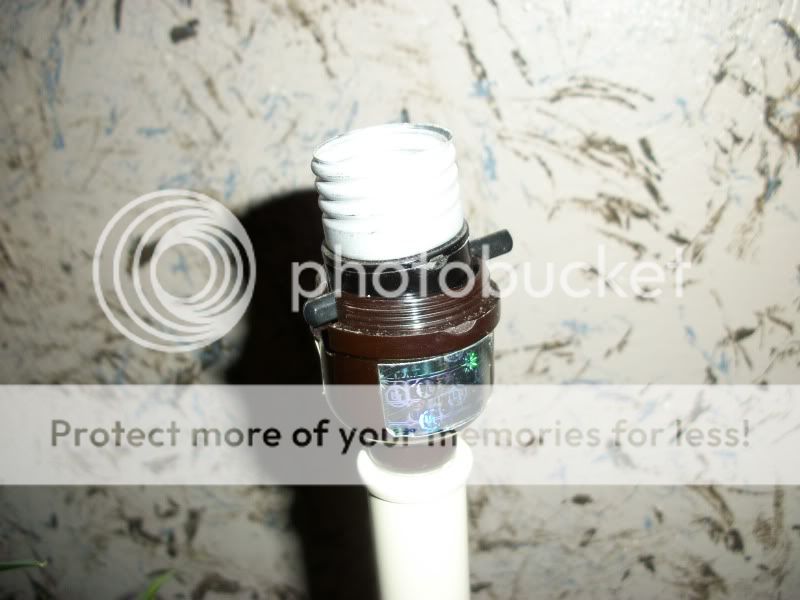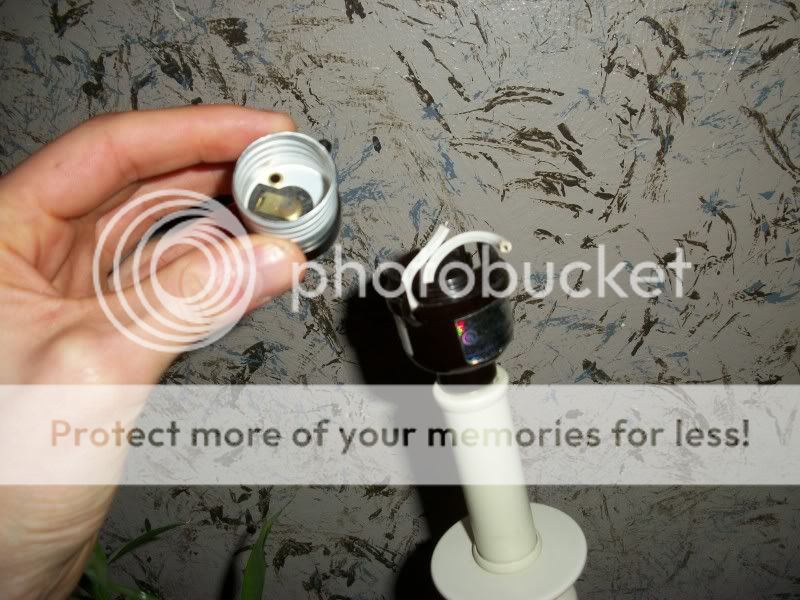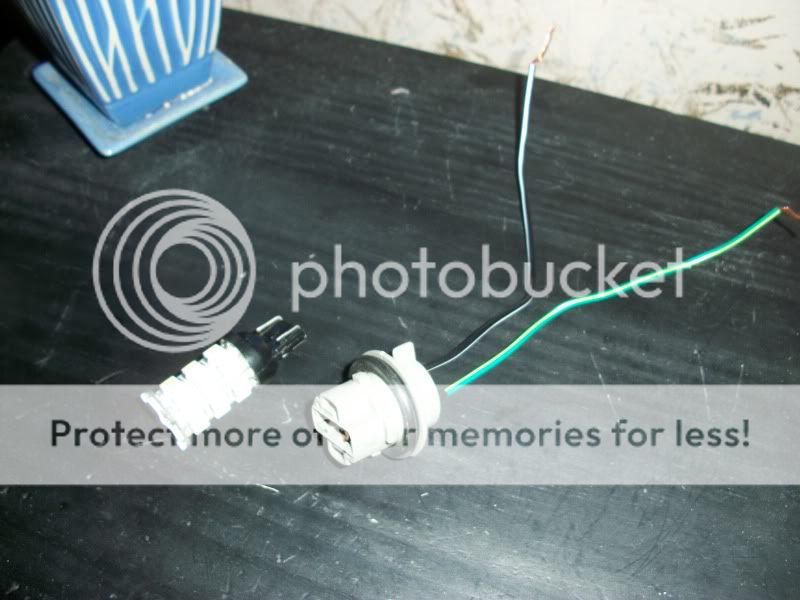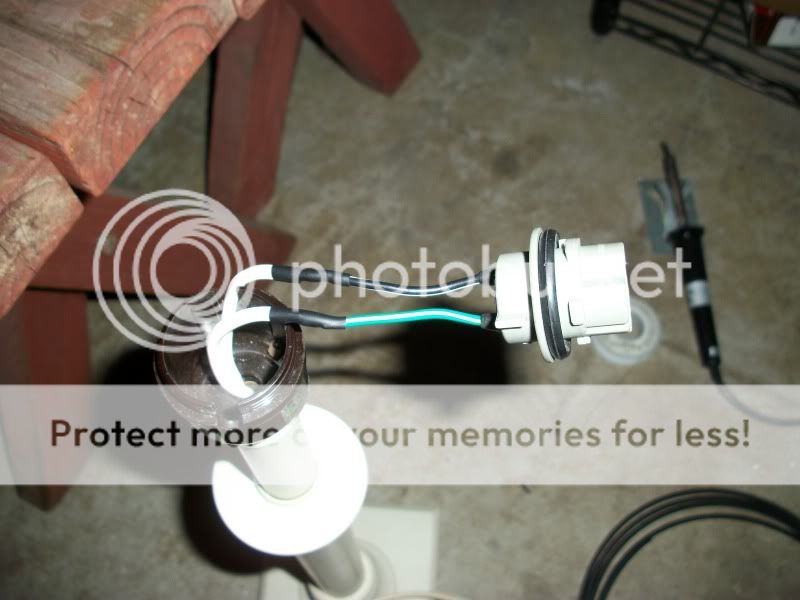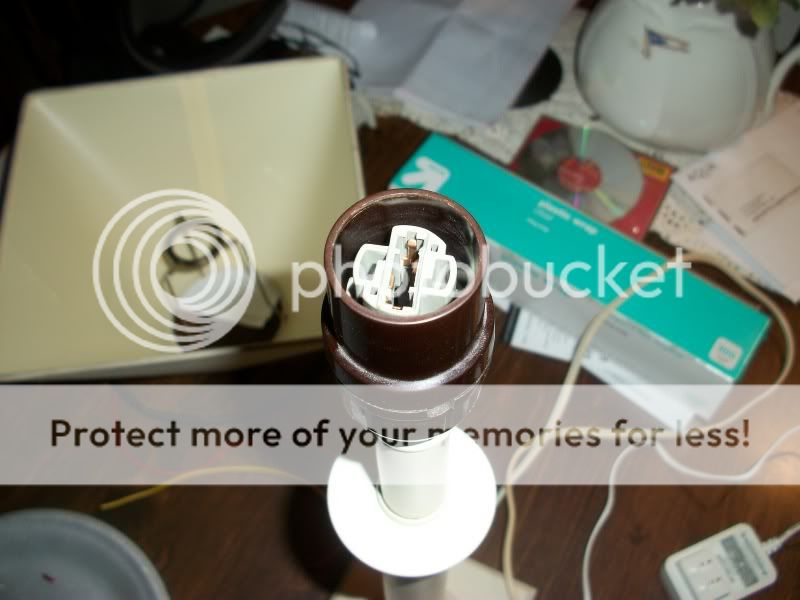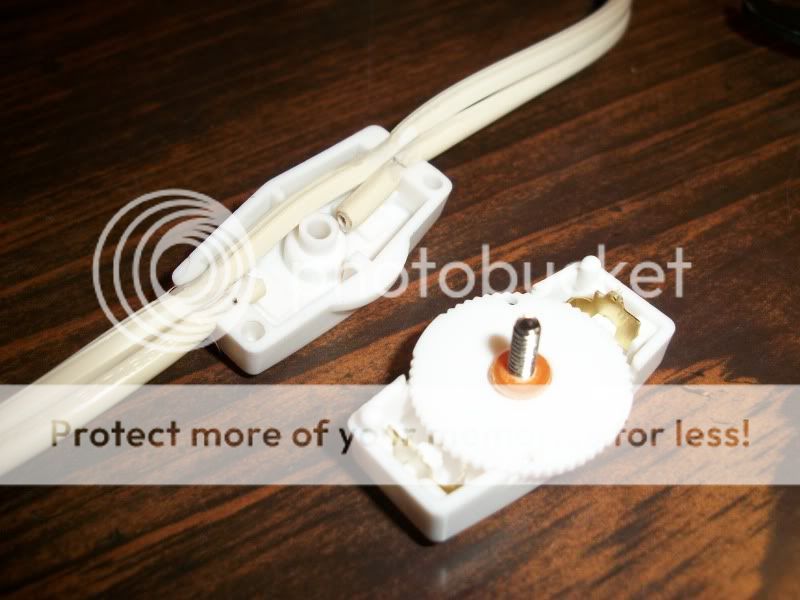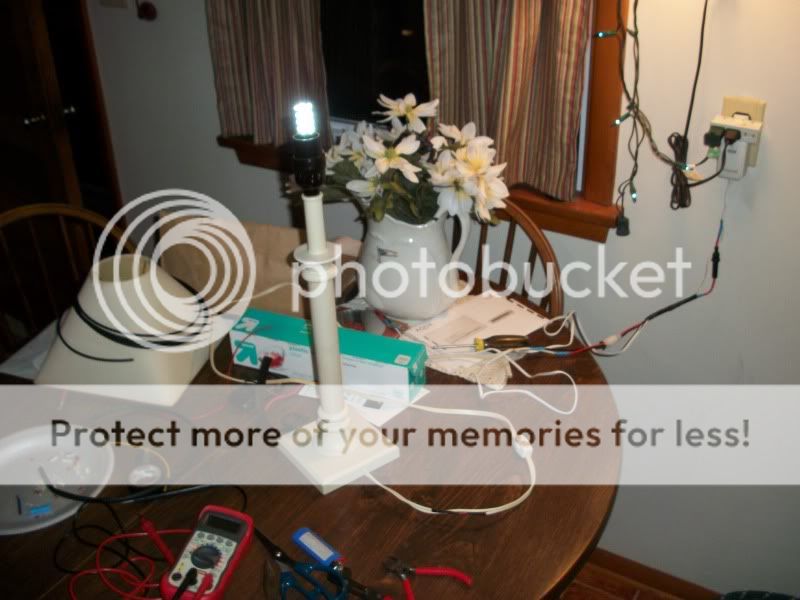I have recovered the following data from Google's cache manually.
Please post any errors and corrections in a new post below.
-
The format is:
Date, time, old postcount#, poster;
post data
-
I will try to fix the CPF links in the next 2 weeks or until I give up in frustration. Can not do that and verify with CPF down.
-----
01-07-2011 07:31 PM #5 hayze
I came across this one. It says 12VDC, but it really measures 18.5VDC with the DMM.
I know 18.5V might not be the best voltage for LEDs, but its really all I have to work with now. I have several LEDs that are prewired with resistors. Each LED comes with two wire leads and has one resistor in series with it. They are rated for "12VDC" (plug-n-play for cars).
These are the ones I have
http://ledaccentlights.net/store/index.php?main_page=index&cPath=10
Anyway, obviously 18.5V is a little too high, but can I add additional resistance to compensate? I would assume that its okay as long as the LED sees 20mA, right?
Or what if I put two of the pre-wired LEDs in series? So there'd be two LEDs and two resistors in each series. I tried this with the 18.5V box, and the current measured like 15mA. So I assume this would be okay too?
Lastly, how should I fuse 22AWG with 18.5V? I'm used to fusing in the car on 12-14V.
-----
01-08-2011 08:42 AM #6 jason 77
hayze said:
I came across this one. It says 12VDC, but it really measures 18.5VDC with the DMM.
Careful there, it probably is 12VDC when it has a load drawing 500mA or so.
-----
01-08-2011 03:05 PM #7 blasterman
What Jason just said. Measure it with some kind of load.
-----
01-08-2011 06:22 PM #8 hayze
While the flashlight it originally came with is charging, the voltage starts at 17V and creeps down to 16 where it stops. The current is about 300mA when its 16V.
Its the same with two LED/resistor pairs in series except the current is 15mA or so
I don't need these LEDs to be the max brightness they can be. I'll probably only have something like 5-6 LEDs run total (in pairs for each series).
If the wire gauge will be 22 or possibly 24 at thinnest, then do you think a 250mA fuse would be okay?
-----
01-09-2011 07:09 AM #9 purduephotog
hayze said:
While the flashlight it originally came with is charging, the voltage starts at 17V and creeps down to 16 where it stops. The current is about 300mA when its 16V.
Its the same with two LED/resistor pairs in series except the current is 15mA or so
I don't need these LEDs to be the max brightness they can be. I'll probably only have something like 5-6 LEDs run total (in pairs for each series).
If the wire gauge will be 22 or possibly 24 at thinnest, then do you think a 250mA fuse would be okay?
If the PSU you're looking at is stated 12V but it is producing 18.5 V, you need a better power supply.
Just buy an IP67 Meanwell. They cost about 35$ (for a fixed voltage OR a fixed current unit) and you can get them in 10,15,20,30,45,60 watt varieties.
(Or if you want a 24V unit fixed voltage I'd consider selling you one of the ones I bought- they were supposed to be fixed current, but they were fixed voltage, and return shipping was too expensive)
-----
01-09-2011 08:53 AM #10 andersonEE
Just an FYI...The "Adapter Box" you are referring to is more commonly called a "Wall Wart". If you google search for "powering leds from wall warts" you will get a lot of good information on your topic.
Also, all(at least all that I've had) wall warts supply more voltage under no load than they do under load. This does not mean it is a bad power supply. If you ran it at 500ma it would probably sag to around 12V like Jason and Blasterman said.
If you ever do a project with high power LEDs, I would recommend following the suggestions here and getting a good quality driver. However, since you're doing a small, inexpensive project with 5mm leds I would say go ahead and use your wall wart. Just make sure you limit the current through each led to 15-20mA (use a resistor in each series path). Measure the voltage across the resistor to find the current through it. V=IR.
A fuse probably won't help protect your leds. Those 5mm leds will probably burn out just as fast as a fuse would. However, if you size the fast blow fuse very close to the max current through the leds it might save them.
-----
02-04-2011 01:32 PM #11 hayze
jason 77 said:
I would go with a computer power supply, I've used these in the past and they work rather well and as long as it is a good quality one they last a long time. Plus you then have a choice of voltages to use so if you wanted to power a single high power LED you wouldn't have to drop the voltage from 12vdc to say 3.4vdc less waste that way.
So to power some LEDs, can I tap into my working computer's supply? I'm talking about the computer that I currently use (Dell Inspiron 530)? Is there a way I can find 12V or 6V... or something (5V whatever) inside my working computer and safely/soundly power LEDs from it (assuming I'll use resistors as needed)?
I noticed people do computer 'case mods' with LEDs. Do they tap into the computer's supply to do that (inside the computer)? If so, this is what I want to do except I'd run the wires out of the case and mount the LEDs in the room. Has anyone ever done this?
-----
02-05-2011 05:33 AM #12 ken2400
Keep in mind if the computer is on all the time it is one thing BUT to run LEDs off a computer power supply that is not on all the time would just use up the computer faster. It is a dual core processor so it should fast overall.
-----
02-05-2011 09:57 AM #13 Ken_McE
hayze said:
1) If I draw, for example, 60mA (with 3 5mm LEDs in parallel) on the 12VDC side, then what how much current is being drawn from the wall itself?
Don't have an exact number, but for three 5mm LEDs, it's tiny.
I'm actually planning on having a capacity of 3A or so total. So I'm worried about overdrawing the wall outlet.
In Ohio your outlets should be on at least a 15 amp fuse, you could light your entire first floor with 15 amps worth of LEDs. That 3 amps appears to be the maximum your power supply can produce, in practice I don't think it will be working that hard - it will only take as many amps as it actually needs to run your accent lights. I also have dedicated 12 volt DC LED lights around the house and they work quite nicely. With the comments above about using a computer power supply, I think they are suggesting you can pull the power supply from any outdated computer and use that. Tying your lights into your everyday computer would be inconvenient.
2) Also, are there any safety precautions that differ from wiring in the actual car? For ex, do I still use the same wire gauges and fuse values I would in the car for the nominal current?
The only difference is that in a house you can get into long wire runs. DC voltage can sag on long runs. There exist tables that tell you what gauge to use for what distance, but I don't have one here. In practice if I have a long run, say from the solar panel out back to the LED nightlight out front, I just bump up the wire a gauge and don't worry about it. Not scientific, but it works for my needs.
Last edited by Ken_McE; 02-05-2011 at 10:21 AM.
-----
02-05-2011 07:00 PM #14 hayze
What about the computer slows down? Start up? Processing during use?
And I do keep my computer on all the time. It shuts down rarely, like if the power goes out.
Ken_McE said:
I just bump up the wire a gauge and don't worry about it.
You mean make the wire thicker?
-----
02-05-2011 07:33 PM #15 idleprocess
Most inexpensive DC adapters (aka "wall warts") are unregulated - that is, they only produce their faceplate voltage when operating around their rated current.
Slightly more expensive are regulated adapters, which produce their faceplate voltage across (nearly) their entire operating range.
What others mean when they suggest a PC power supply is using it standalone without a computer connected. PC power supplies have very good voltage regulation and can spit out a lot of current on most of their outputs. If you want robust 12V output, a PC power supply can generally produce tens of amps on its 12V outputs, and do it for cheaper than a dedicated 12V power supply.
Per one of the three laws of thermodynamics, whenever energy conversion is performed, there is loss (you can't win, you can't break even, you can't leave the game). In the case of a DC adapter, Input Power > Output Power. If you're running a string of 3x 1W LED's @ 350mA off of a 12V adapter, that's roughly 4.2W. If your conversion were perfect you'd simply divide output power (4.2W) by input voltage (120V) to determine current (0.035A or 35mA). In reality, you're likely going to see at best 90% efficiency from a cheap adapter, so divide 35mA by 0.90 to get a real-world estimate of about 39mA.
Last edited by idleprocess; 02-05-2011 at 07:47 PM.
I apologize that this letter is so long; I did not have time to write a short letter
-----
02-06-2011 08:31 AM #16 Ken_McE
hayze said:
What about the computer slows down? Start up? Processing during use?
Makes no difference. After all, do your speakers fade when the machine is busy?
The power supplies job is to keep power ready and available for whatever is needed. If you do go with the power supply on your everyday computer, just look for wires coming off it that aren't plugged into anything.
And I do keep my computer on all the time. It shuts down rarely, like if the power goes out.
The thing is, your LED lights could outlast several computers, why should you have to keep coming back and messing with them?
You mean make the wire thicker?
Yes.
-----
02-07-2011 12:08 PM #17 Quigath
hayze said:
So to power some LEDs, can I tap into my working computer's supply? I'm talking about the computer that I currently use (Dell Inspiron 530)? Is there a way I can find 12V or 6V... or something (5V whatever) inside my working computer and safely/soundly power LEDs from it (assuming I'll use resistors as needed)?
I noticed people do computer 'case mods' with LEDs. Do they tap into the computer's supply to do that (inside the computer)? If so, this is what I want to do except I'd run the wires out of the case and mount the LEDs in the room. Has anyone ever done this?
I think what you're talking about is the same type of thing that I do when adding fans to my computer for more cooling. I have added a fan that can be switched from 5v when idle to 12v when gaming. Here is an excellent reference that I've used to tap into my running computers power supply:
http://www.silentpcreview.com/article6-page1.html
In your case, just replace all references to fans to LEDs. Just remember to add heatsinks to any high-power LEDs you might use in your room.
Also, if you look on the side of your power supply it should tell you the max wattage available. A spec sheet on the PSU will tell you the max power available on each rail/line.
Let me know if that's helpful or unclear for you.
Last edited by Quigath; 02-07-2011 at 12:11 PM.
-----
02-08-2011 03:39 AM #18 cwloo
i've been running a direct connection from a 12VDC 800mah wall wart with 3 XRE for months with no major heating issue. With XPG, perhaps you can hook up to 4 XPG since the forward voltage is lower than XRE.
-----
02-13-2011 03:18 AM #19 hayze
Weird project alert! I have some white LED brake/turn/reverse bulbs that are meant for retrofitting into my rear incand assemblies on my car. So shall I put them in my car? Haha, yea right. Well then let's find a safe use for these otherwise useless bulbs.
Before starting, I thank you guys here for the advice... for being in part responsible for me being able to accomplish projects like this. This project is powered by a '12VDC' rated power supply (an unregulated wall wart, that is) like we've been talking about.
I started with a regular house lamp that takes the std 120VAC Edison-base bulbs. The lamp has a damaged push-switch. It doesn't turn on/off without fiddling with it 10 times, so most normal non-light-obsessed people would just throw it away. The way I look at it is the only thing that broken is the switch/socket piece, so that's the only piece I should discard of.
materials: 7440 socket, 7440 LED tower bulb, fuse, switch, psu, and one broken lamp
socket and bulb
Test fit... fits perfectly in the lamp's tip.
So then I soldered it on and mounted it in there. The lamp uses its 'stock' wires still... except for the socket and the plug-in ends where I had to cut/solder.
thumbwheel switch... I thought this switch was a pain to solder with... until I realized that its just a crimp-type thing.
Test run
Its final resting place. Of course its not as bright as when it was a 120V lamp, but it gives a decent amount... decorative for the most part. Works great at night though. Let me know what you think of my little project.
Last edited by hayze; 02-13-2011 at 03:21 AM.
-----
02-13-2011 10:04 AM #20 jason 77
I like it! and the LED cluster will most likely last a lot longer than if it was in a car tail light/turn signal housing because of the added airflow and lack of voltage spikes from the cars electrical system.. Good job.


